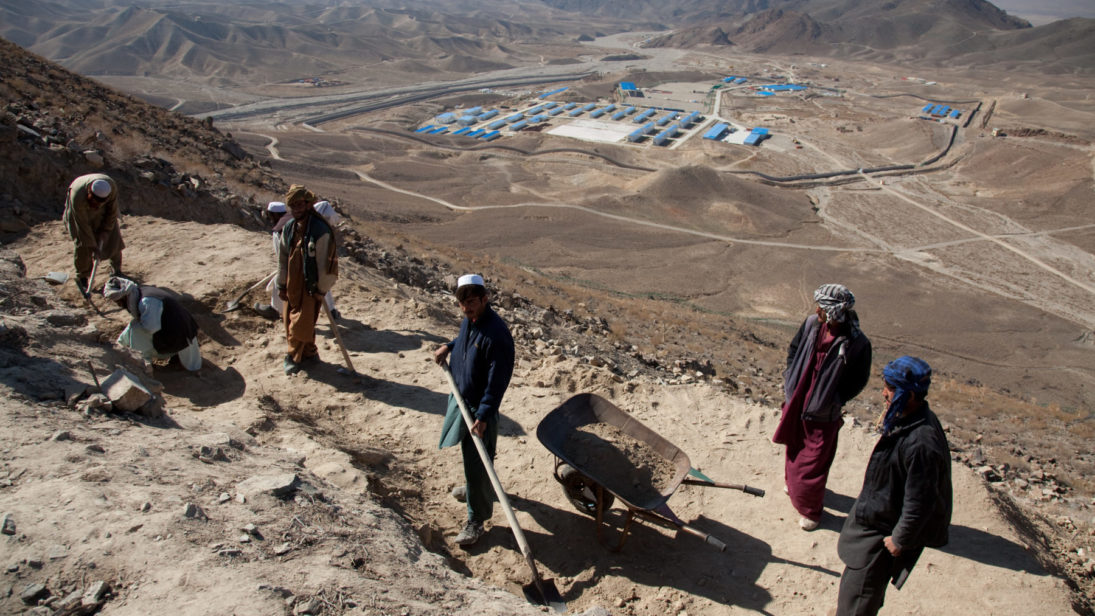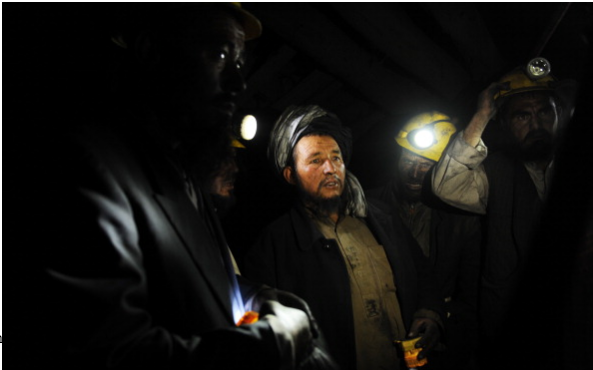
Landlocked Afghanistan, one of the poorest countries in the world, is counter-intuitively home to an estimated one trillion dollars in untapped, rare-earth minerals. If properly managed, these deposits, have the potential to transform Afghanistan into a global center for mining and mineral exports. However, corruption within the Afghan national government has hindered revenue collection from the mining industry, making much-needed development programs difficult to implement. Recently, the Natural Resources Revenue Network openly criticized the Afghan government for mismanagement of its mining sector and its inability to meet revenue collection targets. As such, if the Trump administration wants to tap into Afghanistan’s mineral wealth, it needs to realize the current complexities of a mining sector struggling with inadequate security, a lack of transparency, corruption, and poor infrastructure.
In an interview with Foreign Policy, U.S. Commerce Secretary Wilbur Ross described Afghanistan’s mineral resources as an economic resource that could potentially revitalize a struggling Afghan economy. In one of his first conversations with U.S. President Donald Trump, Afghan President Ashraf Ghani also highlighted the country’s unrealized mineral wealth. Ghani, who was initially wary of developing Afghanistan’s mining sector due to widespread corruption, has now actively promoted Afghanistan’s mineral wealth, believing Trump would be “intrigued by the commercial possibilities.” However, the issue of corruption in the Afghan mining sector represents a serious concern. Mining revenues often end up in the hands of those linked to government officials or the police. A study conducted by United States Institute of Peace similarly revealed that the estimated revenue losses from just five Afghan mines totaled $50 million annually.
Ghani’s willingness to promote Afghan mining might well have been influenced by Trump’s widely publicized support for withdrawing from Afghanistan and Ghani’s need to secure continued U.S. support for the conflict against the Taliban. Considering the growing attacks on the Ghani government’s legitimacy by opposition leaders, combined with territorial advances made by the Taliban, the question arises as to whether Afghanistan is ready for such large-scale mining projects. Despite the past failure by the United States to tap this revenue source, the Trump administration seems determined to work with President Ghani in order to realize this possible game changer. However, Trump and Ghani may be oversimplifying the feasibility of achieving such a goal. With longstanding corruption in the Afghan mining sector, combined with the activities and territorial control of some non-state actors, efforts to tap into Afghanistan’s mineral wealth may fall flat.
Corruption and Non-State Actors: Barriers to Afghanistan’s Mineral Wealth
The U.S. Special Inspector General for Afghanistan Reconstruction (SIGAR) presented corruption as a major obstacle for sustainable growth in Afghanistan’s extractive industries. According to a 2016 SIGAR report, the United States has wasted nearly $488 million on Afghan mining projects. Among 11 projects managed by the Pentagon’s Task Force for Business and Stability Operations (TFBSO) at a cost of $215 million, for example, “TFBSO left with nearly all of its extractive projects incomplete.”
Another SIGAR report released earlier this year outlined the diminishing control the Afghan government has over its own territory. By the end of 2016, the government had 57.2 percent of the country under its control, a 6.3 percent decrease from 2015. Independent reports also claim the Taliban profits extensively from taxing illegal, as well as legal, mining. A survey by the Afghanistan Anti-Corruption Network (AACN) revealed that militant groups in Afghanistan earned an estimated $46 million dollars from illegal mining in the Khogyani district of Nangarhar last year alone. The report additionally noted that Islamic State militants had accessed a number of mines in the Achin district of Nangarhar. Likewise, several crucial routes through which these resources are smuggled are located in government controlled areas. This situation on the ground thus indicates the total extraction of projected mineral targets is impossible at the present time. As such, Ghani may essentially be offering Trump resources he does not actually have.
The Afghan government’s inability to regulate such areas has allowed non-state actiors to engage in illegal and unregulated extraction. According to the Combating Terrorism Center, around 1,400 mines operated illegally throughout Afghanistan in 2016. Additionally, rampant corruption has led to deep skepticism among the Afghan public about the government’s ability to build a functioning mining industry. Although a 2014 law prohibits employees of the Ministries of Defense, the Ministry of Interior, and any other senior officials from holding a mining license, warlords, political elites, and military personnel continue to control mining operations. If this corruption is not addressed, it is unlikely that Trump, despite his enthusiasm, will succeed in effectively tapping Afghanistan’s mineral wealth.

Need for reform
To date, corruption and mismanagement continues to plague the mining industry in Afghanistan, undermining overall national development. While the 2014 law establishes some important regulations, critics say that the law lacks transparency and accountability. For example, the law includes no requirement for the publication of mining contracts, no basic safeguards for bidding and allocation of licenses, and no provision for community monitoring of mining projects. Acknowledging the loopholes in the existing law, Afghan Vice President Sarwar Danish said that the central government seeks to prevent “national traitors” from the benefits of illegal mining through reforms and implementation of professional policies.
The risks involved in the Afghan mining sector are huge. In order to fulfill his commitment to cutting down on corruption, President Ghani, along with the international community, will have to secure and further develop the country’s mining sector. The government can do this by strengthening mining laws, providing better reporting on mining data, and clarifying who actually owns and finances mining projects. Taking such actions would dramatically enhance accountability. Strong rule of law initiatives, aimed at reducing violent competition for control of mines, will bring stability to the mining sector thus reducing the influence of the Taliban and other insurgent groups.
Before going ahead with any deal to exploit the mining sector of Afghanistan, both the Afghan government and the United States will have to pursue legal reforms that strengthen transparency and benefit local communities. Without substantial reforms in governance and the law, any attempt to cultivate mining as an economic opportunity would be a recipe for failure.
***
Image 1: Jerome Starkey via Flickr.
Image 2: Farshad Usyan, AFP via Getty Images.


